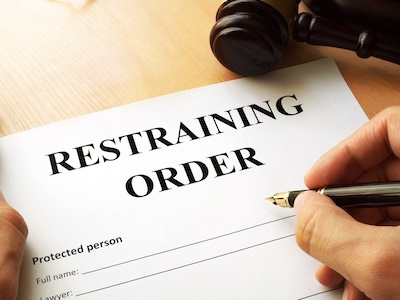Those suffering from abuse can face a long process in restoring their mental, emotional, and physical well-being. Removing the source of the abuse is crucial, allowing victims to heal and regain the positive outlook to return to normalcy in their personal and professional lives. In Texas, special laws have been enacted to keep individuals safe from abusers through restraining and protective orders.
It is important to understand the distinction between the different layers of protection offered by the courts. In many cases, seeking a permanent protection order can be a necessary step to ensure that those in danger of abuse get the peace of mind they deserve.
For individuals who are unsure or fearful of pursuing legal action, starting the conversation with a family law attorney can offer guidance to take those next steps confidently.
In our conversations, I’ll help you better understand how long a restraining order lasts in Texas and why I recommend pursuing a protective order to provide you with greater protection.
Restraining vs. Protective Orders: Legal Options in Texas
Court-provided protection from alleged abusers – who have harmed or neglected you, your children, or both – is available at three levels in Texas:
- Temporary restraining order
- Emergency protective order
- Permanent protective order
A temporary restraining order is requested in family cases when a spouse or significant other wishes to protect their family, their property, or both from a partner. Restraining orders in family law cases can limit communication or contact between the parties, or simply limit the access to and/or use of property, such as vehicles or bank accounts.
Normally, each parent will still be able to interact with their children and will be allowed in the residence they lived together in as a couple. However, in certain emergencies, a temporary restraining order may exclude the offending parent from possession of or seeing the child until the judge can hear the case. Further extraordinary relief in an emergency situation may also include a removal of a party from the home they shared as a family. These types of orders are common in divorce and custody cases to ensure civility through the proceedings.
How Long Does a Temporary Restraining Order Last?
A temporary restraining order typically lasts for 14 days, but the court may issue an extension depending on the circumstances. Limited extensions can be requested by either the plaintiff or the respondent.
Violations of restraining orders are resolved in a civil proceeding. In most cases, the court will hold the respondent in contempt and levy a fine. More serious violations, or repeated violations, could potentially lead to jail time, though this is rare.
Temporary Ex-Parte Protective Order
It is important to note the difference between a temporary restraining order and a temporary ex-parte protective order. The temporary ex-parte protective order provides the victim and their family with more severe and more immediate protection from an abuser or a parent who might put a child in danger, whether intentionally or unintentionally.
These orders last up to 20 days, but a temporary ex-parte order can be extended for additional 20-day periods at the request of the applicant or the court. This form of legal protection is typically used in cases where there is an immediate possibility of family violence, often as an important precursor to the permanent protective order.
What are Emergency Protective Orders?
Emergency protection is the most common protective order issued in Texas. Issued by a criminal court after an arrest is made, this order provides immediate security for victims of violence, sexual abuse, harassment, or trafficking.
Individuals can request the order for their own safety, but in serious cases of violent assault, the court is obligated to issue it. Emergency protective orders normally last anywhere between 30-60 days. However, those orders can increase to 90 days if the respondent was arrested for assault with a deadly weapon.
When Should You Pursue a Permanent Protective Order?
The key difference between restraining orders and protective orders is the issuance of punishment. Restraining orders entail relatively minor civil penalties and are not enforced by officers of the law.
Protective orders however, are enforced by police and result in a court hearing. Charges can climb as high as $4,000 with a possible jail sentence of two years. Successive violations usually result in additional punishment.
For victims of violence and harassment, a permanent protective order offers the best security from future abuse. These orders last up to two years, but a judge is within their rights to prolong the order if the court determines that the abuser committed a severe act of violence or displayed a history of abuse.
Protective orders can restrict abusers from the following:
- Coming near you, your place of business, or your child’s school/daycare
- Harassing or threatening family members
- Carrying a gun
Respondents may also be required to partake in behavior/anger management courses. If needed, police are authorized to forcibly remove respondents from the family residence and arrest them for violations of the order.
Seek Professional Legal Assistance
If you or a loved one is the victim of family violence or abuse, it is critical to make reports with the police immediately after abuse occurs. Obtaining a protective order is easier if there is a complete reporting or documented history.
As a family law practitioner, I have extensive experience in successfully serving victims of family abuse in Fort Bend County, Brazoria County, and Harris County. Call my offices at 281-944-5485 or 979-267-7660 to learn more about how I can help you and your family find legal protection and peace of mind you deserve.

